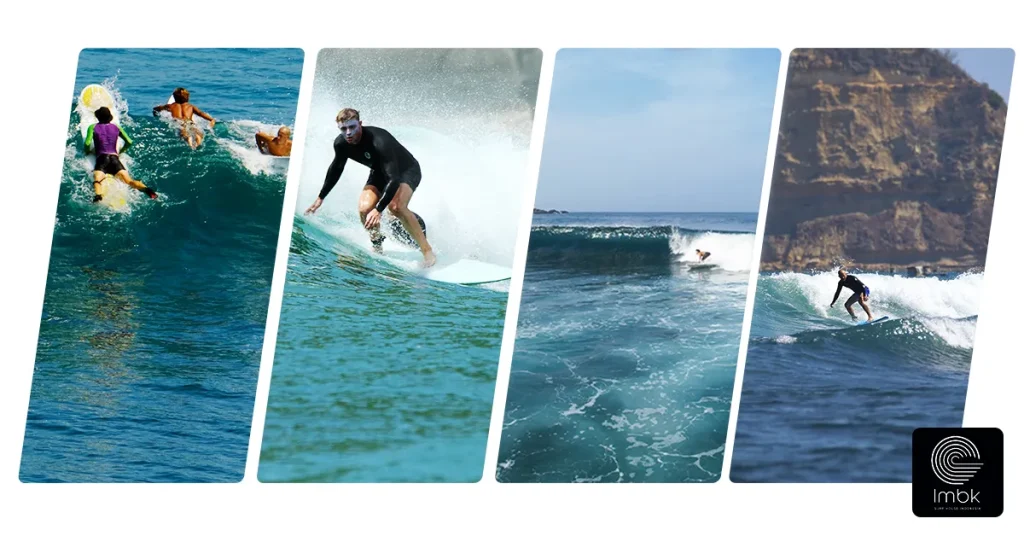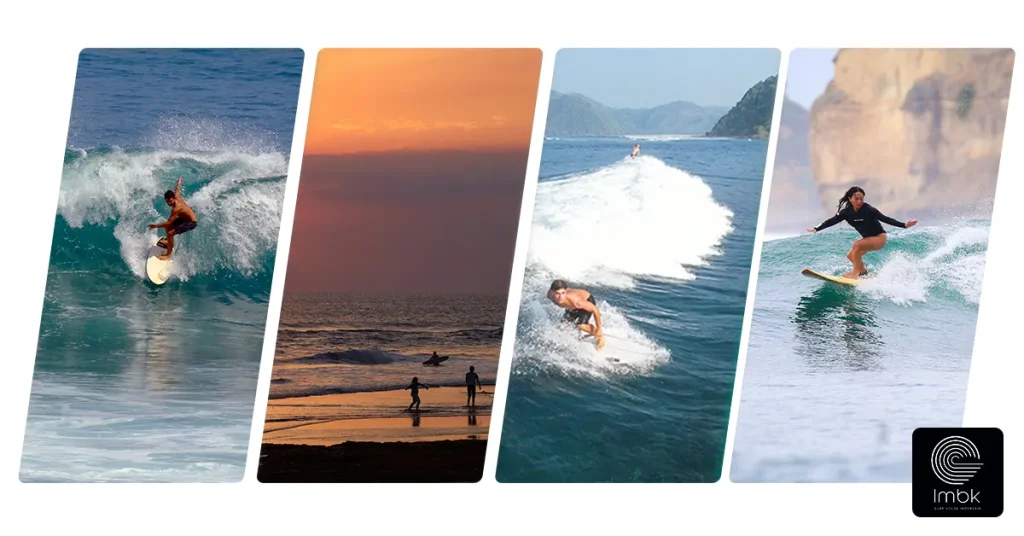When it comes to optimizing your performance in the water, selecting the right surf fins is as crucial as choosing the right board.
Surf fins can dramatically influence the stability, maneuverability, drive, and overall feel of your surfboard.
Whether you’re a beginner or a seasoned pro, understanding the different types of fins and their configurations can help you make informed decisions to enhance your surfing experience.
In this post, we’ll dive into the types of surf fins available, what makes them different, and how to choose the right ones based on various surfing conditions and styles.

Understanding Surf Fin Basics
Before we get into specifics, let’s cover some fundamental aspects of surf fins:
Fin Layouts
- Single Fin: Offers a classic, smooth feel and is typically used on longboards. It’s great for straight-line stability and long, drawn-out turns.
- Twin Fin: Provides increased maneuverability and speed, ideal for fast, loose surfing on smaller waves.
- Thruster (Tri-Fin): The most popular setup, offering a balance of stability, control, and maneuverability. It works well in a wide range of conditions.
- Quad Fin: Great for speed in small to medium waves, offering more stability than a twin fin but with almost similar looseness.
- Five-Fin Setup: Offers versatility to switch between a quad and a thruster setup by changing fin configurations based on wave conditions.
Fin Features
- Base: The length of the fin where it connects to the board, impacting drive (longer base equals more drive).
- Depth: The height of the fin from the base to the tip, affecting hold and control in the water.
- Rake: The angle of the fin’s curve backward, influencing the arc of your turns.
- Foil: The shape of the fin’s outer surface, which affects the flow of water over the fin surface and can impact speed and lift.
Choosing Fins Based on Surf Conditions

Wave Size
- Small Waves: Opt for larger fins with more rake to help generate more speed and maneuverability.
- Large Waves: Choose fins with less area and more depth for better control and stability.
Surfboard Type
- Shortboards: Thruster or quad setups are generally preferred for their balance between control and agility.
- Fish and Funboards: Twin or quad setups can enhance the board’s inherent speed and looseness.
- Longboards: Single fins are traditional, but some modern longboards use 2+1 setups (a single large fin with two smaller side fins) for added control.
Surfer Experience
- Beginners: Should start with larger, more forgiving fins that provide stability and ease of use.
- Intermediate to Advanced Surfers: Can experiment with different setups and sizes to find what best suits their surfing style and the wave conditions.
Material and Flex
- Fins are made from various materials affecting performance:
- Fiberglass: Offers rigidity and control, suitable for powerful surfers and big waves.
- Plastic: More affordable but less performance-oriented, good for beginners.
- Carbon Fiber: Lightweight and stiff, offering excellent responsiveness.
- Composite Blends: These mix materials to balance flexibility, weight, and performance.
Flex also plays a crucial role:
- Stiffer Fins: Better for bigger, powerful waves where control is paramount.
- More Flexible Fins: Excellent for smaller waves where additional energy and spring are needed.
Personal Preferences and Experimentation
Ultimately, the best way to determine the ideal fin setup is through experimentation.
Many surfers keep several types of fins to swap out based on the surf conditions and what they feel like riding that day.
Consider starting with a versatile thruster setup and then branch out to specialized fins like quads or twins as you refine your preferences and surfing style.
At LMBK Surf House, our designated coaches and instructors will guide you though the process of choosing the right fins for your skill level and waves you’re riding.
Conclusion
Choosing the right surf fins is essential for tailoring your surfboard’s performance to match your surfing style and the prevailing wave conditions.
Whether you’re just starting out or are looking to fine-tune your setup, understanding the intricacies of surf fin dynamics can lead to a much more satisfying surfing experience.
Don’t be afraid to try different setups and talk to more experienced surfers or surf shop experts, as this can provide valuable insights tailored to your specific needs.
Happy surfing and as always, we can’t wait to see you at LMBK Surf House!







